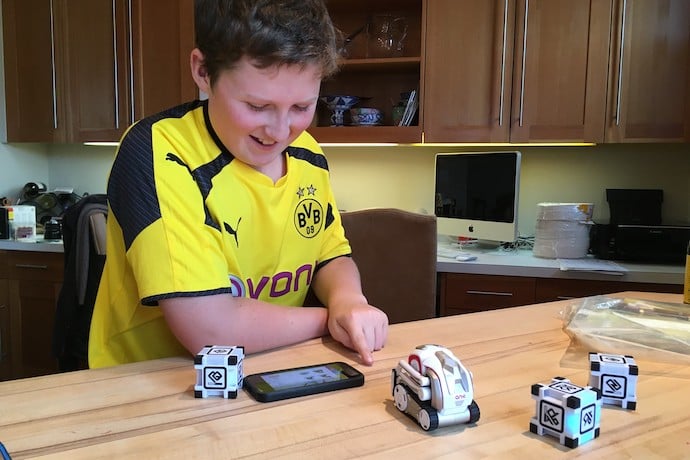Teaching AI to my students has always been something that has intrigued me, but the technology moves so fast that it has never seemed altogether practical. Once confined to the halls of universities and research laboratories, AI has started creeping into some undergraduate and secondary school curricula in the past few years. This has been interesting to watch as the math and statistics required have been large barriers. For similar reasons, primary schools have also been slow to adopt AI for the youngest students, although this may be changing.
Fueled by new platforms and K-12 standards, some schools have started ambitious middle school and elementary programs in AI. Two schools in my area now include AI in their middle school Computer Science curriculum. When I heard about these new developments, I have to admit that I was curious, since AI is an exciting branch of Computer Science. However, I was also less than sure about how practical AI would be in a middle school classroom.
This is how I found myself recently in the offices of an AI startup in Pittsburgh called ReadyAI. Devoted to bringing AI education to students as young as elementary-age, ReadyAI markets both an AI programming platform and a curriculum to schools and after-school programs. Utilizing the AI-powered robot, Cozmo, ReadyAI’s AI+Me curriculum teaches students 5 principles of AI that were developed by AI4K12, an academic working group tasked with making the discipline more accessible.
In the class I shadowed, students as young as 5 gave the robot instructions to identify a small plastic cube. Already familiar with the programming environment, students were excited and jumping when their robots moved around obstacles to find the blinking light cube. ReadyAI’s platform uses a programming environment developed at Carnegie Mellon University called Calypso. It has visual and voice recognition software that runs largely in the background to aid the robot. Students manipulate When/Do tiles in the rule-based programming environment and watch as the robot responds. It seems like a hefty task, but I found that even the 5-7 year old students were fairly capable with the programming style of Calypso.
After watching a few lessons, it became clear that the Cozmo robot is well-suited for introducing students to the concepts of AI. The work students were doing was more akin to programming (with a healthy assist from AI), but it was a great way to introduce the concepts. Students received instruction on sensors, pattern recognition, and representation along with problem solving techniques. Moreover, they were having a blast using the robots to complete tasks and tell stories which is a crucial hook for young students.
This story-telling factor was also front and center in the students’ competition projects. ReadyAI sponsors WAICY, an AI competition for young students. In these regional competitions, students utilize the robot’s voice and pattern recognition capabilities to create scenarios and solve problems. ReadyAI sees this competition as a great ambassador for AI, and from what I have seen, the projects students create are full of ingenuity.
Another tool for teaching AI to young students is the Scratch cousin Cognimates which was developed at the MIT Media Lab. More suited for middle school students, Cognimates gives teachers more options for creating AI models as Cognimates utilizes both text and visual training. Its Rock, Paper, Scissors lesson is a great way to teach students about how AI trains the computer using examples rather than giving instructions. Cognimates does this by connecting with external open-source classifiers. This allows instructors and students much more latitude in their creations, although the learning curve for some students may be steep. That said, I am excited to see how this tool matures as more and more students use it to make applications.
Overall, I was impressed with the opportunities that already exist for teaching students how to utilize machine learning and AI. I could see quite a few opportunities for this field to grow in the coming years. More and more, it is also becoming clear that AI can be taught to students of all ages. Topics as varied as reinforcement learning and classification engines are within the grasp of younger students if given the right context. Personally, I plan on incorporating a few mini-units on AI into my curriculum next year to test the waters. Although, I have a feeling that by that time, the AI landscape could be drastically different for teachers.
Learn More
Waicy
https://www.readyai.org/waicy/
Teaching kids about AI
https://www.iste.org/explore/artificial-intelligence/teaching-kids-what-ai-and-isnt
AI Facts
https://kids.kiddle.co/Artificial_intelligence
Kids teach AI humanity
https://www.youtube.com/watch?v=f4KLjqH19as
Guide to AI
https://www.kickstarter.com/projects/1740916372/the-complete-guide-to-artificial-intelligence-for
Coginimates
Machine-based learning
http://steamcurriculum.weebly.com/scratch-based-machine-learning.html

